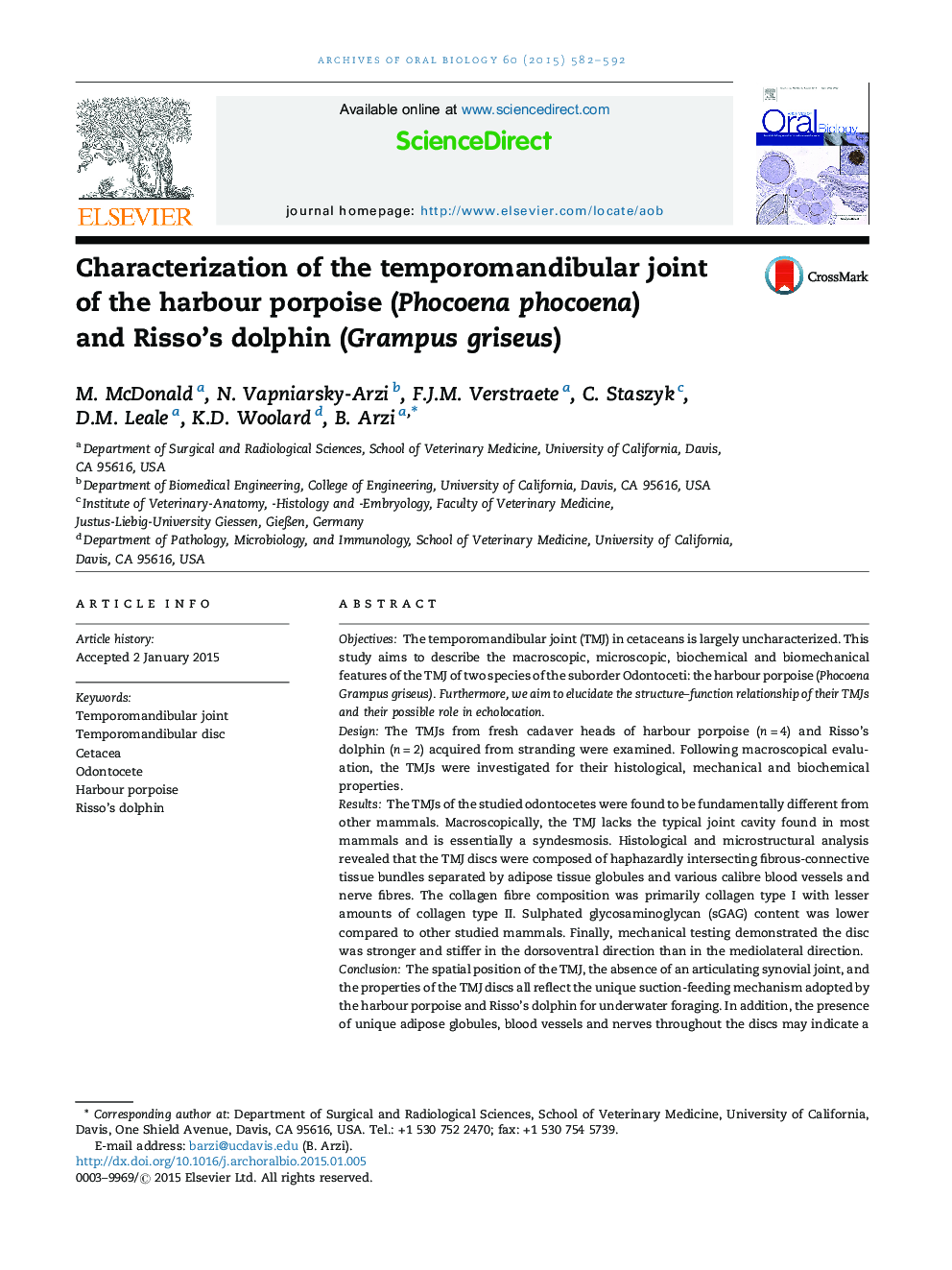| Article ID | Journal | Published Year | Pages | File Type |
|---|---|---|---|---|
| 6050965 | Archives of Oral Biology | 2015 | 11 Pages |
Abstract
The spatial position of the TMJ, the absence of an articulating synovial joint, and the properties of the TMJ discs all reflect the unique suction-feeding mechanism adopted by the harbour porpoise and Risso's dolphin for underwater foraging. In addition, the presence of unique adipose globules, blood vessels and nerves throughout the discs may indicate a functional need beyond food apprehension. Instead, the disc may play a role in neurological sensory functions such as echolocation.
Related Topics
Health Sciences
Medicine and Dentistry
Dentistry, Oral Surgery and Medicine
Authors
M. McDonald, N. Vapniarsky-Arzi, F.J.M. Verstraete, C. Staszyk, D.M. Leale, K.D. Woolard, B. Arzi,
